Intel X25-M G2: Dissected and Performance Preview
by Anand Lal Shimpi on July 22, 2009 6:00 PM EST- Posted in
- Storage
Be sure to read our latest SSD article: The SSD Relapse for an updated look at the SSD market.
Earlier today the FedEx man dropped off a box with this in it:
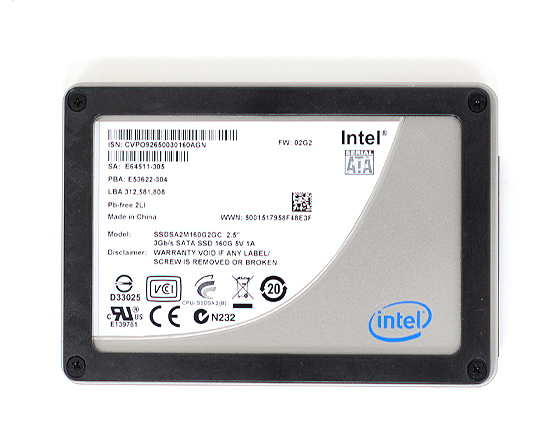
That's the new X25-M G2 I wrote about yesterday, which features a slightly improved controller and 34nm NAND flash. Im hard at work on a full review but I thought I'd share some preliminary data with you all.
As I mentioned yesterday, the new drive has a silver enclosure. Intel says the new enclosure is cheaper than the old black one:
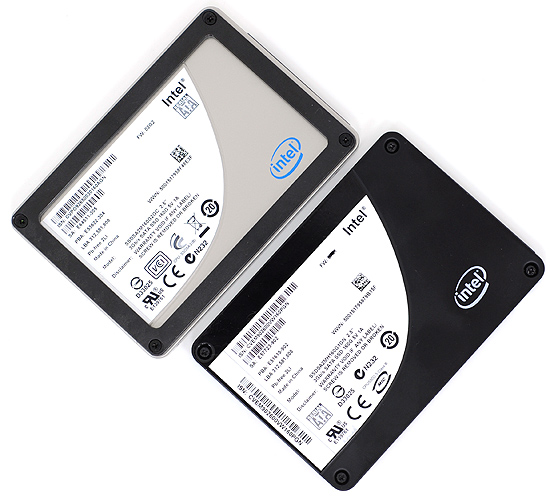
The X25-M G2 (top) vs. the X25-M G1 (bottom)
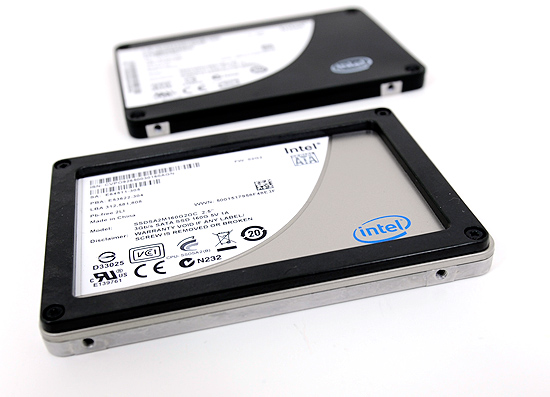
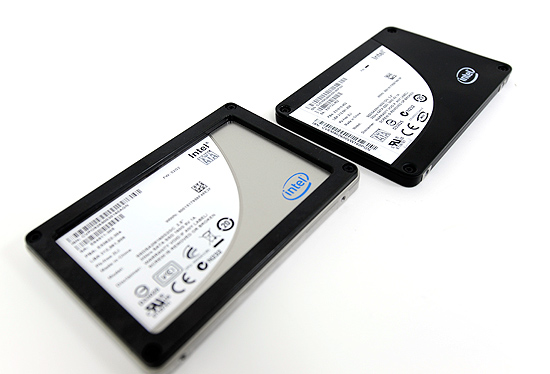
Our sample also shipped with a plastic spacer so the drive can be used in 9.5mm 2.5" bays as well as 7mm bays by removing the spacer.
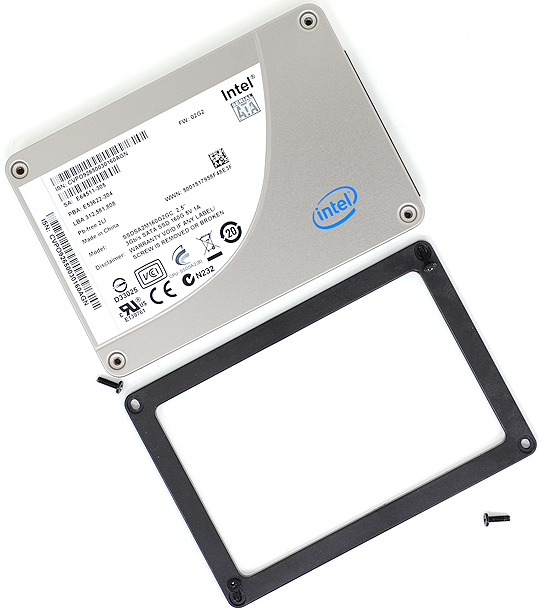










87 Comments
View All Comments
Sunday Ironfoot - Wednesday, July 22, 2009 - link
Could you possibly benchmark these drives with BitLocker or TruCrypt as I'm interested to see the performance impact of using full hard drive encryption with these SSDs.swish - Wednesday, January 6, 2010 - link
I've got an x-25M G1 80GB and I installed truecrypt whole-disk encryption on it.Windows Experience Index dropped from 7.4 to 5.9 after I encrypted.
ATTO disk benchmarks dropped from around 70MB/sec writes and 220MB/sec reads to ~65MB/sec writes and 130-145MB/sec reads.
"Seek" latencies are still pretty low.
Keep in mind I have a slower CPU (AMD AthlonX2 4800+) so my encrypt/decrypt speed isn't stellar (TrueCrypt benchmarks AES at around 200MB/sec which is what I'm using)
Anyone else care to share? :) I'm curious about BitLocker performance too.
Cheers,
Swish
Dospac - Thursday, July 23, 2009 - link
I too am extremely interested in this type of testing. Just the numbers on one of the new Intel drives with and without fde would suffice, don't need an all-out comparison.has407 - Wednesday, July 22, 2009 - link
Thanks for the update! Based on your numbers, a couple items you might look at when you do more testing, assuming you're using IOmeter(?) ...1. 4KB random write 34.5MBs = ~8.4K IOPs and a latency of ~118us = very close to the Intel spec ("up to" 8.6K IOPs and 115us latency).
2. 4KB Random read 58.5MBs = ~14.3K IOPs and a latency of ~70us = significantly lower IOPs and a bit lower latency than Intel specs ("up to" 35K IOPs and 85us latency), and significantly lower latency than you show (200us).
Intel uses IOmeter with a queue depth of 32; are you using the same, or is there another possible bottleneck (especially on the read side) in your test system?
Or maybe methinks Intel's 35K IOPs 4KB random read claim is bogus? That would imply a latency of ~29us (or ~143MBs), but they also spec 85us latency, which gives ~11.8K IOPs--which more closely matches your test numbers.
has407 - Thursday, July 23, 2009 - link
Apologies, last paragraph in my previous post has a brain fart... it assumes IOPs are proportional to latency, which is obviously false with multiple channels and pipelining. Duh. Other benchmarks (e.g., PC Perspective) suggest 35K IOPs might be achievable in theory, but I've yet to see anything close to that number in practice.MODEL3 - Wednesday, July 22, 2009 - link
"While I don't believe that 70MB/s write speeds are terrible, Intel does need to think about improving performance here because the competition is already far better. The more important values are still random read/write performance, but sequential write speed is an area that Intel continues to lag behind in."Well maybe with the introduction of the 320GB model with increased Random 4KB Writes (10.6 IOPS?) and with 166MHz SDRAM instead of 133MHz maybe they can hit around 95MB/s (85 advertised) in Sequential write performance
DominionSeraph - Friday, July 24, 2009 - link
PC133 SDRAM has a bandwidth of 1.066GB/s. Somehow I don't think it's the problem.sotti - Wednesday, July 22, 2009 - link
Any update on the ammount of writes the drive will take before it's Kaput.I know MLC lifespan is improving, but an update on how long a drive like this would last as an OS drive w/ a page file would be nice to know.
has407 - Wednesday, July 22, 2009 - link
Unfortunately as Anand mentioned, Intel doesn't provide detailed durability specs for the M/MLC drives, other than a "Minimum Useful Life: 5 years" (from the datasheet). While the 34nm parts may have actually have a lower per-cell durability than the 50nm parts, I would hope and expect they have compensated for that with additional sparing and ECC. (The BER for all Intel's SSD drives are the same: "1 sector per 10^15 bits read".)Intel provides more data for the E/SLC drives: "1 petabyte of random writes (32 GB)" and "2 petabyte of random writes (64 GB)" (from the datasheet). Assuming "random writes" means evenly distributed, that implies ~31.5K erase/write cycles. Again, however, I would hope and expect that Intel is being very conservative with those numbers. MLC drives typically can sustain an order-of-magnitude (or more) fewer cycles than SLC, but then again they're cheaper, so more room for spare cells and better ECC.
I think (or at least hope) there's little reason to doubt Intel's "5 year" assertion; validation is pretty straightforward, and they seem to have done their homework in all other respects. Not to mention that SSD typical failure mode (write and non-catastrophic) is preferrable to HDD (read and catastrophic), assuming of course it's done properly...
Given that Intel is holding their controller very close to the vest, my guess, and only a guess, is that Intel is being very conservative with writes (more power and slower programming = longer life), or might be doing a full write-read-verify, which might explain why their write speeds are lower than the competition. If so, good for them. Last thing the SSD market needs is to have large numbers of drives failing in weird ways in a couple years.
p.s As far as pagefile activity... I wouldn't worry about it unless you're constantly and seriously overcommitted on memory. There's a lot less pagefile activity than most people think. But that's another subject.
Anand Lal Shimpi - Wednesday, July 22, 2009 - link
I believe Intel is still rating these things as having a minimum useful life of 5 years.Take care,
Anand